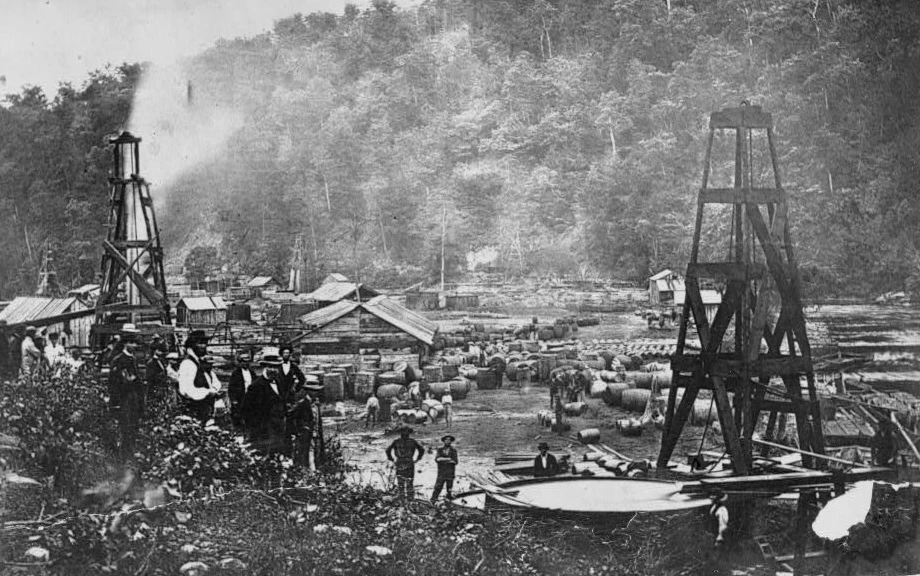When Edwin L. Drake struck oil in Titusville, Pennsylvania, in 1859, he became a household name as the man who launched the modern petroleum industry. However, while his early success remains a celebrated milestone in industrial history, Drake’s later life tells a story of misfortune, financial hardship, and eventual recognition through the efforts of those who believed in his legacy.
From Fame to Financial Ruin

After drilling the first successful oil well, Drake enjoyed a brief period of prominence. However, his failure to patent the drilling method he pioneered — a process involving pipe driving to prevent cave-ins and groundwater contamination — meant that others quickly capitalized on his innovation. Meanwhile, Drake’s lack of business acumen and poor investment decisions left him financially vulnerable.
By the mid-1860s, Drake’s fortunes had turned. Once the figurehead of a new industry, he now struggled to make ends meet. In 1863, he left the oil fields of Pennsylvania for New York City, hoping to find work outside the oil business. His declining health, including a debilitating spinal condition and chronic neuralgia, compounded his difficulties. Within a decade, the man once hailed as the “father of the oil industry” had become impoverished and dependent on the charity of friends and family.
The Campaign to Help Drake

Drake’s plight did not go unnoticed, particularly among those in the burgeoning oil industry. Prominent figures, including oilman George H. Bissell — one of Drake’s early backers — were deeply moved by his circumstances. Bissell and others spearheaded efforts to secure financial relief for Drake, believing it unjust that a man who had revolutionized the industry should languish in poverty.
In 1873, the Pennsylvania state legislature passed a bill granting Drake an annual pension of $1,500. This was equivalent to a comfortable middle-class income at the time and was a direct result of persistent advocacy by Bissell and other oil industry leaders. The pension was framed not as charity but as a long-overdue acknowledgment of Drake’s contributions to the state’s—and the nation’s—economic development.
The pension was more than just financial support; it was a restoration of dignity for Drake, who had felt forgotten by the industry he had helped create. The funds allowed him and his wife, Laura (Dowd), to move to Bethlehem, Pennsylvania, where they lived out their days with a measure of stability. For Drake, the pension represented a bittersweet recognition: while it eased his later years, it also underscored how little he had personally gained from the industry he had pioneered.
Drake’s Legacy
Edwin L. Drake passed away on November 9, 1880, at the age of 61. His death was reported in newspapers nationwide, often accompanied by reflections on his tragic decline. However, the oil industry ensured that Drake’s contributions would not be forgotten. In 1901, oilmen funded the construction of a grand monument over Drake’s grave in Titusville’s Woodlawn Cemetery. The monument, designed by renowned architect John A. Dempwolf, stands as a tribute to Drake’s enduring legacy.
A Life of Highs and Lows

Drake’s story is a reminder of the complexities of innovation and the sacrifices often borne by pioneers. While his contributions to the petroleum industry are celebrated, his life also reflects the challenges of protecting intellectual and financial rights in an era of rapid industrial change.
The efforts of advocates like George Bissell and the Pennsylvania legislature to secure Drake’s pension illustrate the power of collective action to rectify historical injustices. Today, Drake’s achievements and struggles serve as a testament to human ingenuity—and to the enduring need to recognize and support the individuals who shape history.
Visitors to Titusville’s Drake Well Museum and Park can explore the site of his groundbreaking achievement and learn about his life, a legacy that continues to inspire and educate future generations. This is a ‘must visit’ spot for all energy professionals. I also recommend checking out Oil Creek State Park while you’re there!
